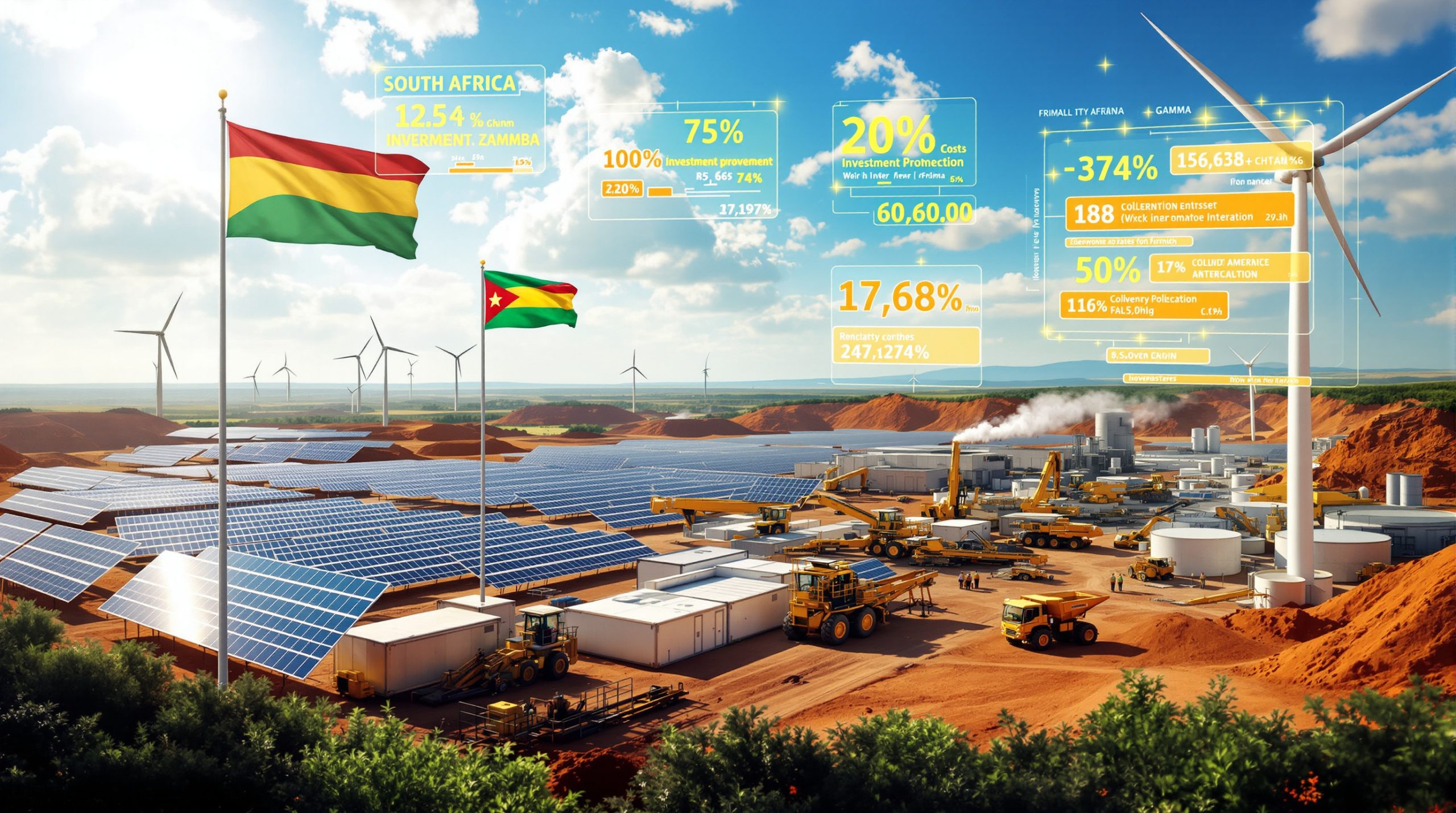Nornickel Maintains 2025 Nickel Production Forecast: Market Implications and Industry Outlook
Nornickel, Russia's leading metals producer, has reaffirmed its 2025 nickel production guidance of 204,000–211,000 metric tons despite a marginal quarterly decline in output. This decision reflects strategic maintenance efforts and operational adaptations to mitigate domestic and global economic pressures. The company's resilience underscores its critical role in global nickel and platinum-group metals (PGM) supply chains, even as it navigates currency volatility, geopolitical investor strategies, and shifting demand dynamics.
Nornickel's Q1 2025 Production Results and Annual Forecast
In the first quarter of 2025, Nornickel reported production figures that showed minor year-over-year changes across its metals portfolio. Nickel output reached 42,000 tons, representing a 1.1% decrease compared to Q1 2024. Palladium production stood at 741,000 ounces, down 0.6% from the previous year. Platinum production was the only metal showing growth, with 180,000 ounces produced, marking a 0.6% increase year-over-year.
Despite these quarterly fluctuations, Nornickel has maintained its full-year 2025 nickel production forecast of 204,000–211,000 metric tons. This steadfast forecast demonstrates management's confidence in overcoming temporary operational adjustments and achieving annual targets.
Senior Vice President Alexander Popov explained the Q1 production dip: "The modest decline of nickel production was temporary and due to scheduled short-term repairs and maintenance of equipment, aiming to support steady operation of main technological units." This strategic approach prioritizes long-term operational stability over short-term production gains.
The maintenance schedule was carefully planned to minimize disruption to annual output while ensuring critical infrastructure remains reliable throughout 2025, particularly as Nornickel navigates challenging global commodities insights and market conditions.
What Caused the Q1 Production Decline?
The primary factor behind Nornickel's Q1 production decline was a series of scheduled maintenance operations and equipment repairs across multiple facilities. These maintenance activities reduced nickel output by approximately 470 tons, accounting for the 1.1% year-over-year decline.
Rather than representing operational problems, these maintenance initiatives form part of Nornickel's proactive asset management strategy. By conducting regular equipment servicing and upgrades, the company aims to prevent more serious disruptions that could impact production over longer periods.
The timing of these maintenance activities was strategically planned during a period of market uncertainty, allowing Nornickel to optimize facilities during a relatively lower-demand period while positioning for stronger output later in 2025 when market conditions might improve.
Alexander Popov emphasized that these activities were "short-term repairs" designed specifically to "support steady operation of main technological units," highlighting the preventative nature of the maintenance rather than reactive repairs to unexpected failures.
How Is Nornickel Positioned in the Global Metals Market?
Nornickel maintains a dominant position in the global metals market, particularly in the platinum group metals (PGMs) sector. The company accounts for approximately 7% of global nickel production, making it one of the world's largest producers of this essential battery metal.
More impressively, Nornickel produces roughly 40% of the world's palladium, giving it significant pricing power and market influence in this critical catalytic converter metal. The company's platinum output, while smaller than its palladium production, still represents a significant share of global supply and continues to show growth potential as evidenced by the Q1 2025 increase.
Nornickel's competitive advantage stems partly from its high-grade ore deposits in Russia's Arctic region. These deposits allow for more cost-effective extraction compared to many global competitors, particularly for PGMs where ore grades are typically higher than global averages.
The company's vertical integration—controlling everything from mining to refining—provides additional operational flexibility, allowing Nornickel to manage market volatility more effectively than some competitors who rely on third-party processing.
Current Challenges Facing Nornickel
Nornickel faces significant domestic economic challenges, most notably from currency fluctuations. The Russian ruble has appreciated approximately 40% against the US dollar, creating a substantial headwind for the company's dollar-denominated revenue streams while its cost base remains largely ruble-denominated.
High interest rates in Russia have further complicated Nornickel's financial outlook, increasing borrowing costs and potentially limiting capital expenditure plans. These elevated rates have made financing new projects and expansions more expensive, potentially slowing growth initiatives.
On the international front, Nornickel confronts declining or stagnating metal prices across its portfolio. This price weakness reflects broader concerns about global economic growth and industrial demand, particularly from China, the world's largest metals consumer.
BCS brokerage analysts have pointed to another international challenge: "We believe that the risk of a global economic slowdown as a result of tariff wars will negatively affect the company's metals portfolio." This reference to potential US trade tariffs under President Trump highlights the geopolitical risks facing Nornickel beyond direct sanctions.
Reduced demand amid market turbulence has further pressured sales volumes, with industrial buyers becoming more cautious about inventory levels and long-term commitments in an uncertain economic environment.
How Are Sanctions Affecting Nornickel's Operations?
While Nornickel has avoided direct Western sanctions thus far, the company faces significant indirect impacts from the broader sanctions regime targeting Russia. Western buyers have increasingly avoided Russian metal, creating market access challenges despite the absence of specific restrictions on Nornickel's products.
Payment complications have emerged as international banking restrictions make transactions more complex, often requiring alternative payment routes or currencies. This adds operational complexity and potentially increases transaction costs.
Access to Western equipment and technology has become restricted, complicating maintenance and expansion plans that may have previously relied on imported machinery or technical expertise. Nornickel has had to identify alternative suppliers or develop domestic solutions.
In response to these challenges, Nornickel has accelerated market diversification efforts, developing stronger relationships with Asian buyers less constrained by Western sanctions policies. The company has also adjusted supply chains to work around logistical complications arising from transportation and shipping restrictions.
Internal production processes have been modified to reduce dependence on Western inputs, reflecting a broader strategy of increasing self-sufficiency in response to international isolation. These adaptations demonstrate Nornickel's resilience but likely incur additional costs and operational complexities.
Global Nickel Market Outlook for 2025
The global nickel market in 2025 presents a complex picture of supply growth and uncertain demand. Nickel prices traded around $18,500 per ton in Q1 2025, representing a 12% decline from 2024 peaks. This price weakness reflects market concerns about potential oversupply as Indonesian production continues to expand.
Supply dynamics are increasingly dominated by Indonesian nickel operations, which continue to ramp up output through partnerships with Chinese companies. This expansion has shifted global production centers away from traditional mining regions toward Southeast Asia.
Demand growth remains heavily tied to electric vehicle battery production, with an estimated 60% of nickel destined for battery applications. However, adoption rates for EVs have shown signs of slowing in major markets, creating uncertainty about near-term demand growth.
Regional supply distribution continues to evolve, with Russia's share of global production declining relative to Indonesia's expansion. This shift has geopolitical implications as supply chains become increasingly concentrated in fewer regions.
The price outlook remains cautious, with most analysts projecting sideways movement or modest recovery depending on EV adoption rates and global economic growth. The correlation between nickel and other base metals has weakened somewhat as battery demand creates a unique demand profile compared to traditional industrial metals.
The outlook for nickel production is part of broader trends in the mining industry 2025 outlook that shows increasing focus on metals essential for the green energy transition. Meanwhile, companies are investing heavily in digital transformation in mining to improve efficiency and reduce costs amidst challenging market conditions.
FAQ: Nornickel's Production and Market Position
What is Nornickel's nickel production target for 2025?
Nornickel maintains its 2025 nickel production forecast at 204,000-211,000 metric tons, despite a slight 1.1% decrease in Q1 production compared to the same period last year.
How has Nornickel's palladium production changed in Q1 2025?
Palladium production decreased by 0.6% to 741,000 ounces in Q1 2025 compared to the same period in 2024.
What challenges is Nornickel currently facing?
Nornickel faces domestic challenges from the ruble's 40% appreciation against the US dollar and high interest rates, while internationally dealing with price pressures, reduced demand, and complications from Western sanctions on Russia.
Is Nornickel directly affected by Western sanctions?
While Nornickel is not directly subject to Western sanctions, the company faces indirect impacts as some Western producers avoid Russian metal, payments have become complicated, and access to Western equipment is restricted. Many mining companies are conducting mining feasibility insights studies to navigate these geopolitical complexities.
Disclaimer: This article contains analysis and forecasts based on current market data. The metals market is highly volatile and subject to rapid changes based on global economic conditions, geopolitical events, and technological developments. Readers should conduct their own research before making investment decisions.
Interested in Staying Ahead of Critical Mineral Discoveries?
Don't miss the opportunity to gain a competitive edge in ASX mineral discovery investments with Discovery Alert's proprietary Discovery IQ model, delivering real-time notifications that could significantly impact your portfolio returns. Explore how major discoveries have historically generated substantial returns by visiting the Discovery Alert discoveries page today.




